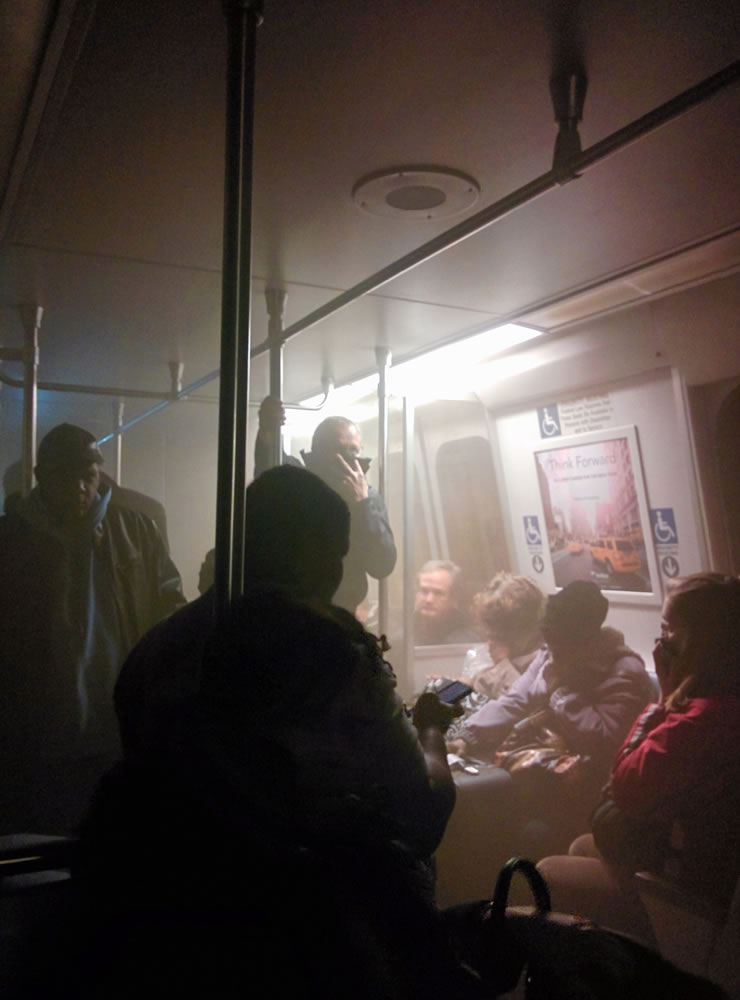WASHINGTON — The subway train had just pulled out from a busy Washington station when it ground to a halt and foul-smelling smoke began filling the tunnel and the cars.
“We’re going to die here!” passengers cried.
In the fear and chaos that followed, riders prayed but also helped one another, performing mouth-to-mouth on an unconscious woman and offering an inhaler to a man curled in a fetal position on the train’s floor. Some waited for rescuers as instructed; others opened the doors of the train and made their way to safety through the darkness on their own.
One woman died and more than 80 other people were sent to the hospital, mostly for smoke inhalation, after the electrical malfunction Monday on Washington’s Metro. A day later, 21 passengers remained hospitalized.
Commuters demanded to know: Was the train’s evacuation unnecessarily delayed? Were passengers given the right information? And what caused the death of the woman?
Authorities in the nation’s capital had no immediate answers.
The woman, identified Tuesday as Carol Glover, 61, of Alexandria, Va., was the first fatality on Washington’s Metro system since a 2009 crash killed eight passengers and a train operator.
Glover was an analyst for a DKW Communications, an IT company that does work for the government, and was working on a contract with the U.S. Department of Agriculture at the time of her death, said her supervisor Cliff Andrews.
The malfunction happened at L’Enfant Plaza, one of the subway’s busiest stations, around 3:30 p.m. Monday, at the beginning of the afternoon rush hour. The stop is near the Smithsonian’s National Air and Space Museum and many federal office buildings, including the headquarters of the National Transportation Safety Board, which is leading the investigation.
NTSB investigator Michael Flanigon said the smoke started when something came into contact with the high-voltage third rail and caused an electrical arc.
The six-car train stopped about 800 feet beyond the platform, and the arcing occurred roughly 1,000 feet beyond the train, Flanigon said. There was no fire.
Aboard the subway, passenger Jonathan Rogers, 31, said he and two other people tried in vain for 20 minutes to revive a middle-aged woman who had slumped to the floor unconscious near the front of the train, where the smoke was the heaviest.
“We know you do chest compressions and mouth-to-mouth, so that’s what we did,” Rogers said. “Nothing was happening and she was laying there unconscious. Somebody took her pulse and said they couldn’t feel a pulse.”
Rogers said a man scooped the woman up in his arms and carried her through the cars toward the back of the train.
It wasn’t immediately clear if the woman was the one who died.
Rogers said he doesn’t understand why passengers weren’t allowed to leave the train sooner for the one- or two-minute walk back to the platform.
“It just kind of felt like, ‘Why were we trapped on that train that long?’ ” Rogers said.



